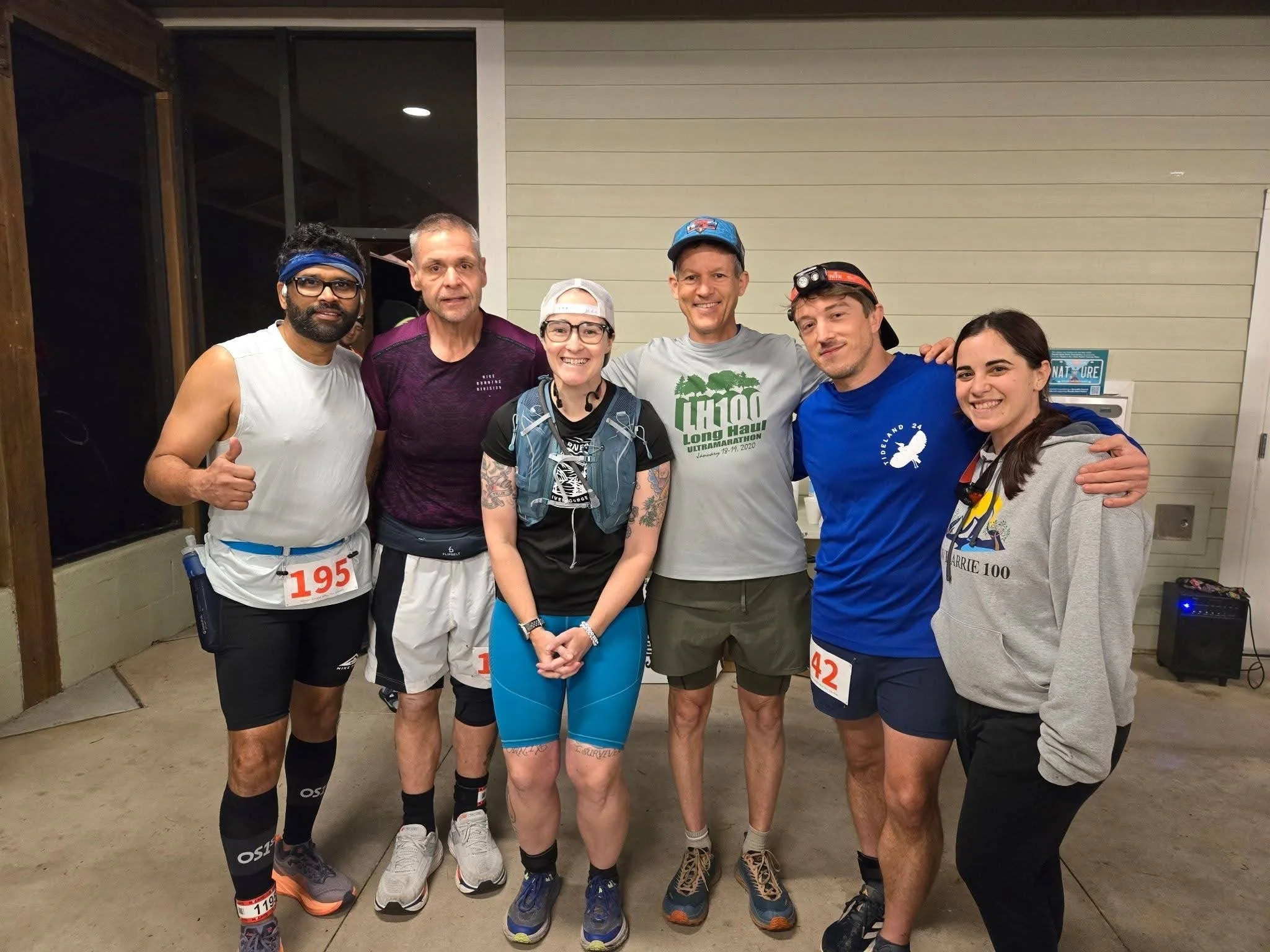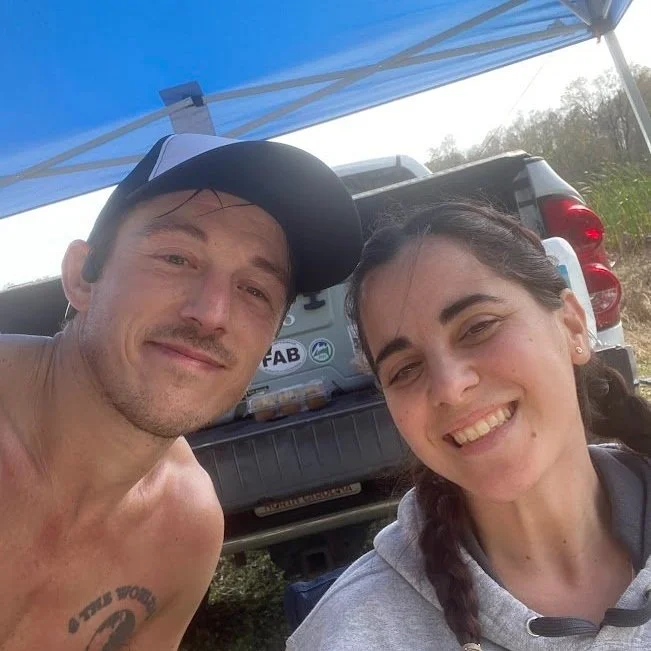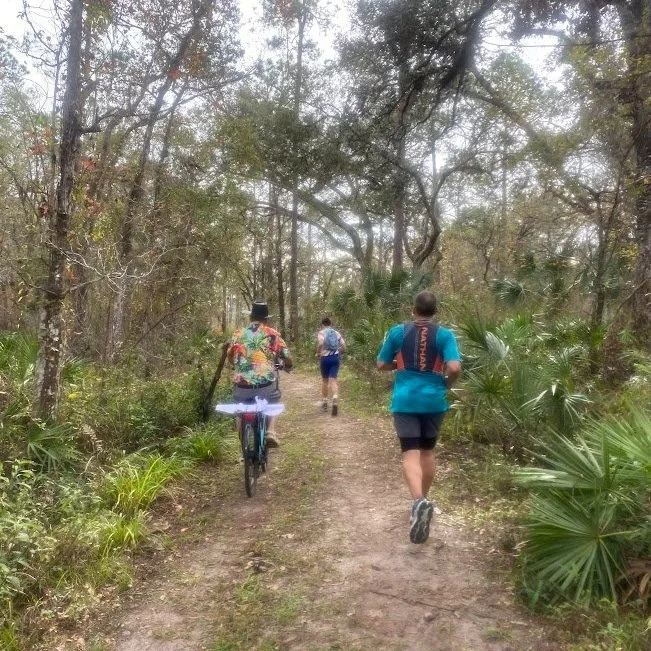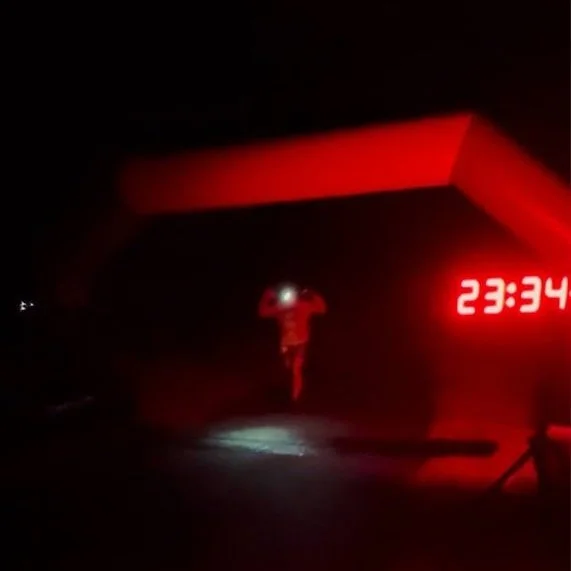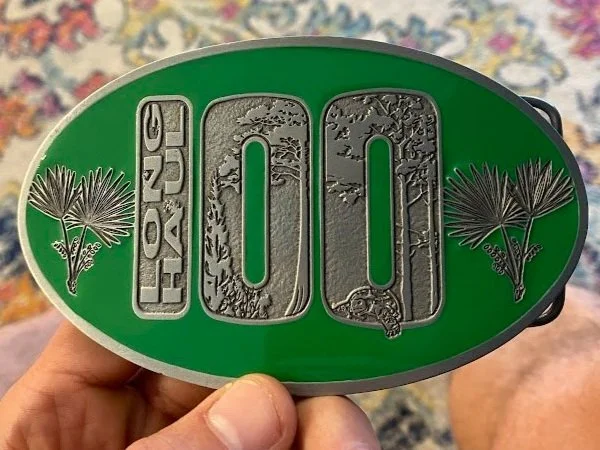2025 Long Haul 100
For the past few years, I had reserved the middle of January for the Southern Tour Ultra: Last Person Standing race. But, after another disappointing outcome in 2024 that I blamed on the frigid cold weather, I decided that in 2025 I would choose a warmer 100-mile race to schedule for January. Potentially a race where I could PR my 100-mile time. That’s how I landed on the Long Haul 100. For those of you not familiar with the Long Haul 100, it’s a flat 100-mile trail run—mainly on double track or grassy trails—and it is comprised of 6 loops around a 16.75-mile course.
I asked Christa to be my crew chief for this race, and she was happy to accept my request, so we planned a weeklong family vacation in Florida centered around the Long Haul 100. It wasn’t until we got down to Florida that we realized that I forgot to pack our camping tote which contained our camp stove, utensils, cookware, and other convenient items that would make our basecamp more comfortable and functional, so there we were shopping at Walmart Friday night after packet pickup, purchasing all the forgotten items.
We arrived at Colt Creek State Park just after 5:30 am on Saturday, January 18th, with about 1.5 hours to spare before the start of the race at 7 am. We parked my pickup truck, set up our canopy behind the truck and just a few feet away from the course, and began crafting our base camp. We had ourselves a nice little setup—something to look forward to as the race progressed.
We made our way over to the start/finish area, about a 1/2 mile from where our basecamp was, and there we saw a bunch of familiar faces: Amy McDowell, Jeff Winchester, Jim Martin, Andy Barrett, Emily Lyons, and Kaleel Mohammed. We chatted with our friends until it was time to line up. The countdown began at 10 seconds, and then we were off!
My strategy heading into the first lap was to run for 3 miles at a 10:00-11:00 minute per mile pace and then walk for 3 minutes, maintaining these intervals for the entirety of the lap, which I executed nearly flawlessly. I was without headphones, choosing to take in all of my surroundings, and I wasted little time at any of the 3 aid stations along the way. I made it back to the start/finish right on target and spent a few minutes with Christa so that I could change my shoes and apply some Vaseline to my toes. I was surprised with how quickly I was developing hot spots, but I tried to not think too much about it—I addressed the issue and kept it moving.
Lap 2 started out with a similar strategy of running 3 miles, and walking 3 minutes, but by 25 miles into the race, I began slowing to 2 miles of running and 5 minutes of walking. My friend Andy Barrett is the captain of Aid Station 2, and when I saw him on the first loop, I told him to expect me back by 1:15 pm, which I nailed almost perfectly. So, although I was slowing down, I was still on pace for my A goal—sub-22 hours. As I arrived back at base camp, I realized that my hot spots had disappeared. The change of shoes and Vaseline were a great idea. But, I was starting to develop some groin/inner thigh chafing from the warmth and humidity. I applied a generous amount of Salty Britches and ate a few pickles.
I put my headphones on, gave Christa a big smooch, and headed back out for Lap 3. My legs started to feel heavy and my feet hurt. I could tell I had some blisters forming, but they weren’t an issue—at least not yet. I was vibing to my music and trying to keep a similar pace to what I had set during Lap 2 but it was becoming increasingly difficult. The sun started going down and a chill began to move in. By the time I made it back to Aid Station 2, I was soaked with sweat but instantly cold whenever I would stop moving. I asked if they had a heater or any source of warmth at the aid station, which they did not, but Andy proceeded to literally give me the long-sleeve shirt off his back (thank you, Sir!). Before I left the aid station, he pulled me aside and told me to take my time on the next loop, as this would be the most difficult and telling loop of the race. I made a note of his advice and took off, still shivering a bit. I made it back to Christa and told her I wanted to take some extra time to lift my legs, change my clothes, and eat some food.
After a solid 20 minutes at base camp, I realized my A goal was no longer possible. I was 50 miles in and 10 hours and 45 minutes had elapsed. Nightfall was here, and I was tired, so it would be silly to think the second half of my race would be faster than my first. But, my B goal—sub-24 hours—was still on the table. I gathered myself, told Christa when to expect me back, and asked her to try to have some ramen and instant potatoes ready around that time. I headed into the dark with my headlamp and put on a funny podcast. My new strategy was to run 1-1.5 miles and walk 7-10 minutes, which was working quite well for me. I forced a smile and tried to maintain it when I could feel my attitude slipping. Lap 4 was slower than the previous 3, due to the more conservative pacing and longer breaks at the aid stations, but I was still able to run during my run intervals which I wasn’t taking for granted.
I arrived back to Christa at base camp a little behind schedule due to my slower pace and told her I wanted to take a few extra minutes to eat and change again. I was enjoying my conversation with her but the minutes moved like seconds, and before I knew it, 15 minutes had gone by. I told her to try and get some sleep and that the next time I’d be through I would likely take minimal time to stop, feeling motivated to finish at the time. I slowly made my way out of base camp and back onto the trail. As I wandered into the darkness the thought of 34 more miles felt overwhelming. But, I reminded myself to just focus on my strategy and getting to the next aid station. It became a brief mantra that I repeated for the next 5 miles or so.
My mantra was disturbed when my headlamp flashed and then shut off. Oh no, my battery was dying and since I chose to run with my handheld only instead of a vest with more supplies, I had no backup battery. I took my phone out of my handheld hoping that the flashlight feature would help guide me through the darkness but I realized I only had 5% battery and the flashlight wasn’t going to get me too far. I played around with the buttons on my headlamp and got the flood beam to turn on, but I wasn’t sure how much time I had left with that setting. I started to run faster, hoping I’d make it to the next aid station without any more issues.
When I got to the next aid station, I asked the volunteers if they had any batteries, and luckily one volunteer came over and saved my night. I thanked her profusely, ate 2 cups of hot chicken noodle soup, and got my ass back on the trail. I was growing more exhausted as each mile rolled by, but I continued to focus on the task at hand: just get to the next aid station.
My memory is a bit foggy about what transpired between Aid Station 2 and returning to base camp after the completion of Lap 5, but I remember getting to base camp and Christa was asleep in my truck. I wanted nothing more than to sleep for a few minutes as well, but I was worried that my phone would die and I wouldn’t have an alarm to wake me up. I tried charging my phone but I was having issues and time was flying by. I needed to get warm, I needed to eat, and I needed tech support—I needed Christa! I woke her up, apologized profusely, and told her to give me 5 minutes of sleep and a few things to eat. I sat in the chair, never falling asleep, but just enjoying the rest. I was nauseous, so I barely ate anything she gave me, and my phone was so full of sweat that it wasn’t charging. At least I was warm.
Christa kicked me out of base camp and reminded me I only had 1 lap to go. My body had tightened up during my time in the chair so I walked for a few extra minutes to loosen up. I had a good playlist in my ears, good batteries in my headlamp, and relatively good spirits. I started moving more quickly, and then I settled back into my same strategy from Lap 5. I went through a variety of emotions during my final lap, thinking about so many different things, but the one thought that stood out to me as I was still smiling. Not because it was almost over, but because I recognized how much growth I’ve experienced as a person that’s hard for me to recognize in my day-to-day but becomes crystal clear in moments like these.
I kept smiling, through the final aid station, and all the way through to the finish—23:34. Andy and Amy Croom were standing there to congratulate me and hand me my green sub-24-hour buckle. Christa was there and I gave her a big ol’ smooch. Emily Lyons was there with her husband Stu and her green buckle. I stood there for a moment, taking it all in. The exhaustion, the aches, the blisters—they were all still there, but so was the overwhelming sense of accomplishment. The Long Haul 100 had tested me in ways I hadn’t expected, but I had stayed in the fight, adapted when things got tough and pushed through. As I held that green buckle in my hand, I felt immense gratitude—for Christa, for my friends, for the volunteers, and for the experience itself. Every race teaches me something new, and this one was no different.

